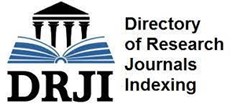Subject Area
Degenerative, Minimally invasive procedures
Document Type
Original Study
Abstract
Background Data: A number of percutaneous techniques have been used in the management of lumbar disk herniation. Radiofrequency coablation is gaining popularity. Purpose: To define the safety and efficacy of radiofrequency Nucleoplasty in the management of contained lumbar disk herniation, to better define the indications and predictors of a good outcome and to report the clinical results. Study Design: A prospective cohort of patients with contained lumbar disk herniationthat have failed conservative treatment will undergo radiofrequency Nucleoplasty. Material and Methods: Thirty four patients with contained lumbar disc herniation underwent radiofrequency Nucleoplasty. These were 23 males and 11 females. Mean age was 36.38 years. The L4/5 level was affected in 59% of patients and 15% had a double level disk herniation. Results: The follow up period was 12 months. This prospective evaluation demonstrated pain relief defined as 2 points or more relief in VAS, in 63% of the patients at 6 months and 50% of the patients at 1 year regarding back pain. Regarding leg pain, relief was in 92.6% of the patients at 6 months and 92.3% of the patients at 1 year.Conclusion: Percutaneous disc decompression using radiofrequency Coblation (Nucleoplasty) is a safe and effective procedure in alleviating discogenic leg pain mainly, with or without back pain. Inclusion criteria for Nucleoplasty have to include patients with contained disc prolapse who are only younger than 40 years old, whose pain has been present no longer than 9 months and are complaining of leg pain mainly. (2012ESJ026)
Keywords
Nucleoplasty, coblation, Radiofrequency, contained disc herniation, Minimally invasive
How to Cite This Article
Taha, Hossam
(2012)
"Radiofrequency Nucleoplasty for Contained Lumbar Disc Herniation. A Prospective Cohort Clinical Case Study.,"
Advanced Spine Journal: Vol. 4
:
Iss.
1
, Article 1.
Available at: https://doi.org/10.21608/esj.2012.3797























